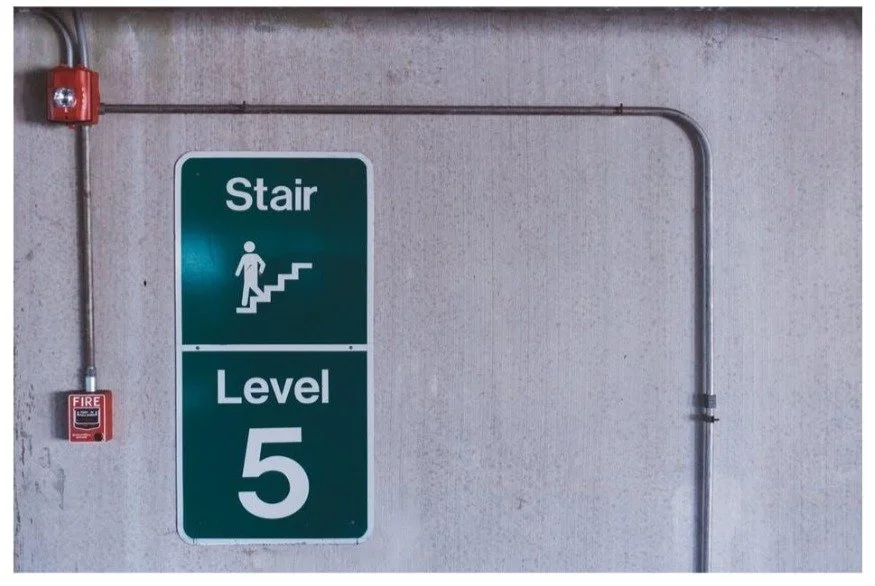Essential Tips for Childproofing Your Home Without Sacrificing Style
As you embark on the exciting journey of parenthood, ensuring your home is safe for your little one becomes a top priority. However, transforming your carefully curated living space into a childproof fortress can be daunting. Fear not – you don't have to sacrifice style for safety. You can create a child-friendly, aesthetically pleasing home with creative thinking and strategic planning. In this article, you'll discover essential tips for childproofing your home, such as adding durable waterproof vinyl flooring while maintaining its charm and character. You'll learn to balance protection and design, from clever storage solutions to innovative safety products.
Create a Kid-Friendly yet Stylish Entryway
Your home's entryway sets the tone for your entire living space, and with a few thoughtful adjustments, it can be both child-safe and aesthetically pleasing. Here's how to achieve that perfect balance:
Incorporate Functional Storage Solutions
Invest in stylish storage options that keep clutter at bay while providing easy access for little ones. Consider a sleek bench with built-in cubbies or decorative baskets for shoes and toys. Wall-mounted hooks at child height encourage independence and keep coats off the floor.
Choose Durable, Easy-to-Clean Surfaces
Opt for resilient materials that can withstand the wear and tear of family life. A washable, patterned rug adds visual interest and hides dirt and spills. Wipeable paint or washable wallpaper in neutral tones creates a sophisticated, simple backdrop.
Create a Safe, Welcoming Space
Install a full-length mirror with rounded edges to brighten the area and allow children to see themselves. Use soft, diffused lighting to create a warm ambiance while eliminating harsh shadows. Consider a playful yet elegant art piece or family photo gallery at eye level for adults and kids to enjoy.
By implementing these design strategies, you'll craft an entryway that's not only child-friendly but also a stylish introduction to your home. Remember, the key is to blend function with aesthetics, creating a space that grows with your family while maintaining its charm.
Choose Furniture with Safety and Design in Mind
When childproofing your home, selecting the right furniture is crucial for maintaining safety and style. Consider these tips to create a child-friendly space without compromising on aesthetics.
Opt for Rounded Edges
Sharp corners are a common hazard for active toddlers. Choose furniture with rounded edges or invest in corner guards that blend seamlessly with your decor. Many modern furniture designs incorporate softened corners without sacrificing sophistication.
Prioritize Stability
Select sturdy, heavy pieces that won't easily tip over. Look for dressers, bookshelves, and TV stands with anti-tip hardware. Choose furniture sets designed with stability and style for a cohesive look.
Consider Materials Wisely
Opt for easy-to-clean, durable materials like leather or performance fabrics for upholstered pieces. These choices withstand spills and stains and maintain their appearance over time. Consider wood or laminate finishes that resist scratches and dents for tables and storage units.
Embrace Multifunctional Designs
Maximize space and minimize clutter with furniture that serves multiple purposes. Ottoman storage units, coffee tables with built-in toy boxes, or wall-mounted desks that fold away when not in use are excellent options. These pieces add functionality without compromising your home's aesthetic appeal.
By carefully selecting furniture that balances safety and style, you can create a child-friendly environment that suits your design preferences.
Select Easy-to-Clean and Durable Flooring Options Like Vinyl
Flooring is crucial for safety and style when childproofing your home. Vinyl flooring is a choice for families with young children, offering a perfect blend of practicality and aesthetics.
Durability Meets Design
Vinyl flooring boasts exceptional durability, withstanding the daily wear and tear of active little feet, toy cars, and inevitable spills. Its resilience doesn't come at the cost of style—modern waterproof vinyl options mimic the look of hardwood, stone, or tile, allowing you to maintain a sophisticated appearance while prioritizing functionality.
Easy Maintenance for Busy Parents
One of vinyl's standout features is its ease of cleaning. A quick sweep or mop is usually sufficient to tackle most messes, saving you precious time and energy. This low-maintenance quality is invaluable when juggling the demands of parenthood and home upkeep.
Safety First
Vinyl provides a softer surface than hardwood or tile, reducing the risk of injury from falls. Many vinyl options also offer slip-resistant properties, an essential feature for preventing accidents in high-traffic areas or bathrooms.
Allergy-Friendly Alternative
For families concerned about allergies, vinyl flooring presents a hypoallergenic option. Unlike carpet, it doesn't trap dust, pet dander, or other allergens, contributing to a healthier indoor environment for your little ones.
By choosing vinyl flooring, you're investing in a child-friendly home that doesn't compromise style or safety. It's a smart solution that grows with your family, offering long-lasting performance and timeless appeal.
Use Clever Storage Solutions to Minimize Clutter
Maximize Vertical Space
When childproofing your home, it's essential to think vertically. Utilize wall-mounted shelves and cabinets to keep potentially hazardous items out of reach while maintaining a stylish aesthetic. Install floating shelves in a playful pattern, or opt for sleek, minimalist designs that blend seamlessly with your decor. These storage solutions keep your space organized and add visual interest to your rooms.
Invest in Multi-functional Furniture
Choose furniture pieces that serve dual purposes to optimize space and reduce clutter. A storage ottoman can hide toys while providing extra seating, while a coffee table with built-in drawers offers a convenient spot to stash remote controls and other small objects. Look for beds with under-bed storage or dressers that double as changing tables. These smart choices help maintain a clean, uncluttered look while keeping essential items close at hand.
Create Designated Play Areas
Establish specific zones for your child's toys and activities to contain the mess and make cleanup easier. Store toys and art supplies in stylish baskets, bins, or cubbies that complement your home's decor. Consider a rolling cart that can be easily moved from room to room, allowing you to keep playthings organized and out of sight when not in use. By designating play areas, you'll maintain a more organized home while giving your child a sense of ownership over their space.
Decorate with Colorful and Playful Accents
Childproofing your home doesn't mean sacrificing style. It's an opportunity to infuse your space with vibrant, playful elements that you and your little ones will love. By incorporating colorful and engaging accents, you can create a safe environment that's also visually appealing.
Embrace Soft Furnishings
Add a pop of color and texture with plush throw pillows, cozy blankets, and soft area rugs. These not only brighten up your space but also provide a cushioned landing for active toddlers. Opt for washable fabrics to make cleaning a breeze.
Incorporate Playful Wall Art
Transform blank walls into captivating focal points with child-friendly art pieces. Choose bold, graphic prints or whimsical illustrations that stimulate imagination. Secure frames properly to ensure they're safe for curious hands.
Utilize Stylish Storage Solutions
Attractive storage options can keep toys and clutter at bay. Colorful fabric bins, painted wooden crates, or sleek modular shelving units can add visual interest while maintaining organization. Look for rounded edges and sturdy construction to prioritize safety.
Add Functional Decor
Select decorative items that serve a dual purpose. A large, colorful clock can be a teaching tool and a stylish accent piece. Oversized floor cushions in fun shapes provide comfortable seating and double as play objects. By choosing pleasing and functional aesthetics, you'll create a space that grows with your child.
Conclusion
As you embark on childproofing your home, remember that safety and style can coexist harmoniously. By implementing these essential tips, like adding durable waterproof vinyl flooring, you'll create a secure environment for your little ones while maintaining your home's aesthetic appeal. From clever storage solutions to multi-functional furniture, the possibilities are endless. Embrace this opportunity to reimagine your living spaces, incorporating child-friendly elements that seamlessly blend with your existing decor. With creativity and thoughtful planning, you can achieve a home that is safe for your children and visually pleasing for adults. Your newly childproofed home will testify to your commitment to family safety and personal style.












